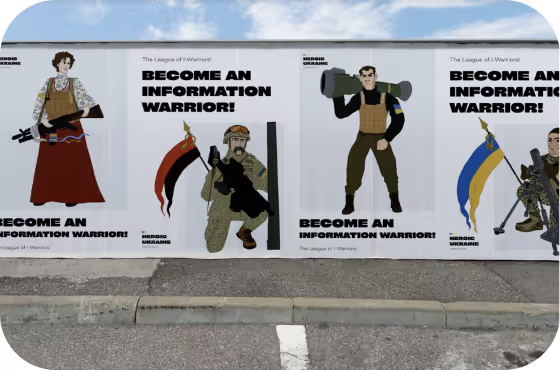How to Land a Freelance Product Designer Job In 2024


2024 has been a year of many great things and many not-so-great things regarding the product design market. Among some of the biggest challenges for product designers is the amount of layoffs and how hard it is to land a job with multiple people applying for 1000 jobs just to get ghosted. Therefore, product design professionals are taking the chance to get a freelance job instead to keep themselves afloat, get in with a company, or make a permanent change. Here’s the good news: as many challenges you may face, businesses desperately need creatives like you.
Getting a freelance product design job can lead to long-term opportunities and lessen the risk for bloated companies, becoming a win-win for all involved. After countless interviews with designers and company discussions, Awesomic uncovered the most in-demand product designer traits in 2024.
And here’s how you can leverage that information to land your next product design job!
Skills required to be a successful freelance product designer

Technical skills of a successful product designer
The top 1% of product designers know that creativity alone will not cut it anymore. It’s not a differentiator; this has become a requirement. Your out-of-the-box thinking needs to be backed up by a technical skillset that can bring your ideas to life. Check out the seven most in-demand technical skills to get a product design job, entry-level, senior, or staff. Hopefully, you’ll score 7 out of 7. Fingers crossed!
#1. User research
User research is a methodic study of target users’ needs and pain points. Many resources and tools are used to achieve the objective of getting data that will solve problems for customers. Our tip is to figure out the company’s methods by scouring their related job openings or genuinely connecting with people who work there and closing any gap you may have for that particular method.
Another tip when discussing user research is to show how you’d implement your methodology. Don’t focus only on the what; take a step further to the how.
#2. Prototyping and user testing
Okay, these are two skills, but they are intrinsically linked. User testing can be done by using prototypes to evaluate versions of the product, identify issues, and collect feedback to fix design, functionality, and user experience flaws.
Prototyping requires skills with specific tools, which are usually highlighted in the job description, and communication skills to collaborate with different stakeholders, so don’t skimp on raising the bar with incredible and prompt communication.
#3. Wireframing
Wireframing is the ability to create wireframes and mockups to visualize the layout and structure of digital products. Once again, for what tools will be the most used, the job description of the product designer position you’re applying for will have the ones you need to dominate.
#4. UI/UX design skills
UX/UI design skills are some of the most important ones to foster. As a quick reminder, Figma defines user interface as what (UI) refers to a product screen or web page’s interactivity, look, and feel. In contrast, user experience (UX) covers a user’s overall experience with the product or website. More likely than not, you won’t have all the necessary skills for both, and that’s ok.
What you need here is a thorough understanding of requirements, how UI/UX affects the product, and other conceptual and technical aspects. In many companies, a UI/UX will have the skills to implement your requirements, so understanding their language and having some of those skills yourself will go a long way.
#5. Graphic design and visual design skills
Another underrepresented skill set is visual and graphic design skills. Graphic design is a form of communication that uses colors, shapes, images, and words to create visual content. Visual design combines graphic design and user interface (UI) design.
Showing your skills on both sides of the spectrum can be a differentiator that will propel you to the top of a job application due to the collaborative nature of the work and the fact that you’ll usually have to connect with multiple design teams to deliver a product design project.
#6. Information Architecture skills
Information architecture skills will combine all of the previous skills while adding new aspects, such as organizing and structuring information within the product to guarantee smooth navigation and content discoverability. Understanding visual hierarchy and cognitive psychology is a must.
Since information architecture is an ever evolving field, keep yourself updated with new data-backed tools and techniques to bring to the table.
#7. Front-end Design
Front-end development skills involve understanding web and mobile platforms’ technical limitations and possibilities, ensuring that designs are visually appealing and functional across multiple devices and browsers.
Proficiency in HTML, CSS, and JavaScript is necessary to understand web and mobile platforms’ technical limitations and possibilities. Understanding how to set up tests and SEO best practices is one of the main tips here.
Tip: To gain a competitive advantage and future-proof yourself against other candidates with the same skillset, take time to master AI and AR/VR-related design skills.
Creative skills
Now, to your strong suit—creativity! Creative skills are self-explanatory. They include imagination, curiosity, creative and critical thinking, problem-solving, attention to detail, collaboration, ability to ask the right questions, brainstorming, and analyzing. All these are valuable tools for developing new ideas, increasing efficiency, and solving complex problems.
Tip: even if you have inherent creative abilities in some aspects, creativity is a skill that can be acquired and improved with dedication. So don’t neglect to work on it as well.
Communication skills
Do you know that communication scored the highest among the top 10 most in-demand skills? It’s no surprise since communication is at the core of everything we do. In the workplace, it helps articulate your ideas, give and receive feedback, build rapport, and effectively collaborate.
Tip: Practice makes perfect. To sharpen your communication skills, look for opportunities to engage in conversations, make presentations, or join group discussions. Other alternatives are taking communication courses, workshops, or reading books.
Project management skills
Working as a full-time product designer, you might not need your own project management skills. Why? Because you have an actual human (aka manager) in charge of project timelines, flow, milestones, and deadlines. However, the moment you go freelance, it all becomes your responsibility. So, if you’re not organized, struggle with time management, and procrastinate, start working on these issues ASAP!
Tip: It’s also a good idea to have at least some basic understanding of how business development works before starting freelancing.
Being a freelance product designer comes with several irresistible benefits, like being your own boss and having the freedom to do what you want and when you want it. However, there are also challenges you should be aware of. And that’s what we’re going to discuss next.
Challenges faced by freelance product designers
Challenge #1. Finding clients and projects
If you ask any freelancer, he’ll tell you that finding clients is probably the hardest and the most terrifying step when you’re just starting. Though almost every business needs product designers, what makes it challenging to find them?
Here is the thing: If you just sit and wait for your clients to come knocking at your door, you’ll never find them. But if you make every effort to put yourself out there, you’ll find clients who are a perfect fit for you.
Challenge #2. Managing multiple projects and deadlines
If you’ve never done freelancing before, the other challenge you may face is juggling multiple projects with strict EOD deadlines. Remember how you started this whole freelance thing to be your boss? Now you have it! Nobody is looking over your shoulder. So, you’ll have to find ways to stay organized with your projects.
Challenge #3. Negotiating rates and contracts
Freelancers don’t have a fixed salary that appears on their bank account each month. Your income and taxes are now your full responsibility. Before taking on a project, you will have a money talk with each client to negotiate the best deal possible. I guarantee it will be very uncomfortable initially, but that’s how business relationships work.
Challenge #4. Balancing creativity and client demands
Can freelancing be your chance to unleash all your inner creativity? Well, yes and no! On one hand, you can choose what brands to work with and what ideas to sell them. On the other hand, most likely, your clients will also have their demands. To be able to balance both is an art in itself.
Sounds intimidating? Luckily, there is an alternative to freelancing—joining the Awesomic cosmic talent design community. You’ll have all the benefits of a freelance designer minus the pain of finding clients, work overload, and constantly negotiating your rates. What’s more, you won’t be alone on your design journey. Apply today!
How do you become a freelance product designer overnight?
Imagine doing your product designs from Bali’s most gorgeous beach while sipping a mouth-watering piña colada. Does this sound like a dream come true? The only thing left is to quit your full-time job and switch to freelance so this dream can manifest in your life, right?
Wrong! I hate to break it to you, but that’s not how the real world works. To become a highly-paid freelance product designer, you’ve got to hustle intelligently. Think of it as launching your own business, except you're building your brand. The reality is—it takes years to reach an overnight success.
Although there are no shortcuts to freelance success, there is an easy-to-follow four-step guide to help you start your freelance product designer career.
Step 1: Building a portfolio
Just as paintings are a window into the artist's soul, your portfolio provides insight into who you are as a designer. If you don’t have it yet, make it your priority to create one. Most clients won’t even start conversing with you unless you show them your work first.
Don’t lose heart if you’re a brand-new product designer with no real projects to showcase! Offer free product design services to those in your network or embark on redesigning products from brands that resonate with you.
Step 2: Develop a network
Networking is an essential part of any business, and since you’ve decided to go freelance, congratulations, you’re a business! Well, an independent contractor, to be exact, provides product design services to clients. In other words, it’s a B2B business. And since no advertising can beat word of mouth, networking should become your go-to marketing tool.
Step 3: Marketing yourself
Your success as a freelancer depends very much on how proactive you are in building your personal brand. The simple formula is to BE EVERYWHERE! LinkedIn, Instagram, Facebook, TikTok, Upwork, Fiver, and more. Communicate, engage, and participate in forums, groups, and communities to connect with your audience.
Step 4: Leveraging online platforms and tools
As a freelance product designer, you have a plethora of online platforms and tools that you can use to enhance your visibility, efficiency, and productivity. For instance, use Behance, Dribble, and Instagram to showcase your portfolio. For project management, use tools like Trello, Asana, or Notion. To connect to businesses and build a client base, use Upwork, Freelancer, and Fiverr. Let’s talk in more detail about that.
Finding freelance product design opportunities
Freelance job platforms
One of the ways to land clients is to have a profile on the most popular job platforms for freelancers. Here are the 3 Top freelancing platforms on the web:
Upwork
Upwork is a freelance job platform that connects businesses with freelancers. You can find a wide range of product design projects there, from short-term gigs to long-term contracts.
Freelancer.com
Freelancer.com is almost identical to Upwork. Freelancers can bid on projects listed by clients and access features like milestone payments, dispute resolution, and collaboration tools.
Fiverr
Fiverr is a renowned platform where freelancers present their services through "gigs" that kick off at $5. Clients can browse listings and hire you based on your expertise and review.
Social media platforms
LinkedIn, Facebook, Instagram, and TikTok are the best platforms to grow your brand. The truth is that’s where your target audience and potential clients spend most of their time. It’s their attention that every business and creator around the globe is fighting for, and so should you.
Be authentic, tell your story, showcase your art, show what’s happening behind the scenes, share your knowledge and expertise, and add value. Soon, the right opportunities will come knocking at your door.
Industry events and conferences
A solid number of 6-figure freelance creatives say networking helped them get their first and top clients. So why not learn from those who’ve been there, done that, and succeeded?
All you need to do is turn your extravert mode on and list all industry events, such as conferences, workshops, and meet-ups, that you’d like to attend in the next 3-6 months. And then, let networking begin!
Tip: Do yourself a favor. Don’t go there begging people to give you a project. Instead, ask yourself how you can add value to those around you.
Setting rates and fees as a freelance product designer
Factors to consider in setting rates
Let’s say your clients are ready to start working with you ASAP. But that dreaded question comes: “How much do you charge?” Since it’s your first gig, you have no idea. Considering these factors by Alex Cattoni should help set your rates right from the start:
- Time (How much time will the project take?)
- Scope (How much work is involved?)
- Deadline (How urgent this project is?)
- Experience (How much experience do you have specifically in what you’re asked to do?)
- Expertise (How many years of experience do you have in product design?)
- Relationship potential (Is there a potential long-term partnership with this client?)
- Portfolio potential (Would you like to add this project?)
Pricing models for freelance product design work
Nicolas Cole, one of the most-read writers on the internet and co-founder of Premium Ghostwriting Academy and Typeshare, introduced an ultimate guide to pricing models that any freelancer can use. The idea is to go from level 1 to level 4 when you start making the most profit.
1. Hourly Rate: You simply charge clients based on the time spent on a project or service.
2. Fixed or project-based pricing: Instead of charging clients per hour, you charge them a fixed price per project.
3. Revenue share: You charge clients based on a percentage of the revenue generated from the project. This means you receive a portion of the client’s profits.
4. Retainer: Clients pay a recurring fee to retain their services on an ongoing basis. Typically, you are paid a fixed amount upfront for a set period.
Negotiating rates with clients
Before you start negotiations, research industry standards and assess your skills and experience based on those standards to determine rates. When negotiating, focus on what you bring and how you can benefit the client and his business. It all comes down to how much value you can add.
Get your job as a freelance product designer in 2024
If you’ve made up your mind and are ready to embark on a new journey as a freelance product designer, then break a leg! You can use this article as your blueprint to find clients, set rates, and build your brand.
We also invite you to apply and join us at Awesomic! At Awesomic, you’ll get the same broad experience as a freelance product designer in different projects. Still, you’ll have security and community support while working from anywhere on crucial product design requests from companies in the U.S. and level up your English communication.
One subscription and your hiring problems solved


FAQ

Awesomic is a revolutionary app that matches companies with vetted professionals across 30+ skill sets, from design and development to marketing and product. Based in San Francisco with a global core team, we offer a faster and more flexible alternative to traditional hiring through a subscription-based model. Awesomic delivers high-quality talent on demand, without the delays of recruiting.

We function as a subscription-based service that matches you to top-tier, vetted talent. Submit a project in just a few clicks and start receiving deliverables in as little as 24 hours. Scale your Awesomic plan up or down as your business needs change.

Every Awesomic subscription comes with unlimited revisions. You receive daily progress updates via the app, and you can provide feedback or request iterations as needed. If your project requires a different approach, you can request a talent rematch at any time, at no extra cost. You can also add teammates to collaborate and streamline feedback

A talent marketplace is a platform that utilizes data and intelligent matching algorithms to connect professionals with projects based on their skills, experience, and availability. While often used internally by large companies, Awesomic applies this model at scale, matching vetted global talent to your most critical business needs.

Hiring is time-consuming, expensive, and risky. Awesomic eliminates that problem. We rigorously vet all talent for technical ability, communication, and soft skills, ensuring only senior-level professionals work on your projects. You skip the job posts, interviews, and delays, and get straight to results.

No, Awesomic goes beyond design. While many clients utilize us for branding, UI/UX design, or motion graphics, we also provide vetted talent in no-code web development, product design, marketing, and more. Think of us as an extension of your team. A flexible, high-performing creative partner from planning to execution, whether you're building awesome products or scaling your team.

You can talk directly with your matched talent via the Awesomic app, connect via Slack, email, or schedule video calls. No matter the plan, you’ll receive daily updates in the app for every active task. You can also tag us in for any issues through our in-app customer chat.












